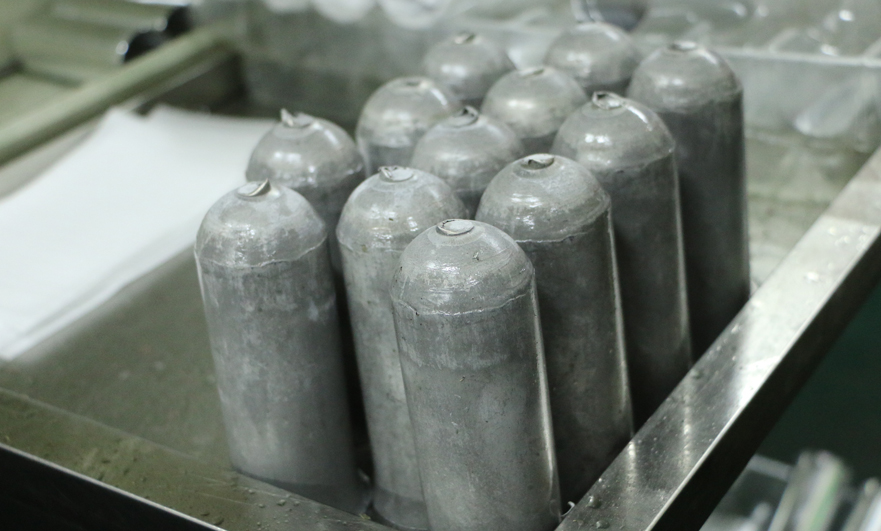15 years one-stop China custom CNC machining parts factory

Hey there I’m VMT Sam!
With 25 years of CNC machining experience we are committed to helping clients overcome 10000 complex part-processing challenges all to contribute to a better life through intelligent manufacturing. Contact us now
 155 |
Published by VMT at Jan 19 2022
155 |
Published by VMT at Jan 19 2022
At present, metal CNC machining castings have been widely used in the manufacturing industry. This casting process dates back 6,000 years and is still used today to make complex and large custom metal CNC machined parts. With the development of the foundry manufacturing industry, the CNC machining process of metal castings is automated, the cost is low, and the processing is more complex, large and small.
Metal CNC machining parts castings have developed many types. There are generally two types of metal CNC machining parts castings: consumable casting and permanent casting.
Metal CNC machining parts castings fall into two broad categories: processes for reusable molds and processes for consumable molds. In both processes, the caster melts the metal CNC machined part material in a crucible, injects it into a mold, and then removes the mold material or casting after the metal cools and solidifies.
Lost Foam Casting
Lost Foam Casting is a method of utilizing disposable or temporary molds. These molds are usually made of resin sand, ceramic shells, plaster, or foam. Making your own disposable molds is an inexpensive and relatively quick process. It is best suited for low-volume metal CNC machining parts production.
Non-expendable mold
Non-consumable molds are reusable permanent molds for metal CNC machined part castings. They are stronger than other metals and better suited to withstand the high temperatures of molten metal. Permanent molds are usually made of metals such as steel or cast iron because of their high strength, low porosity, and heat resistance. Non-expendable molds are ideal for creating multiples of the same cast metal CNC machined parts.

Sand casting
What is sand casting?
This casting method creates a sand mold where the molten metal is poured next. When the metal CNC machined part completes the cooling process, the mold on the outside breaks. Sand is reusable to create another mold, and a mold can only be used once.
Sand casting is widely used in the casting of large metal CNC machined parts and has the advantage of lower cost.
Sand casting process:
The first step in the sand casting process is to create a casting mold. Manufacturers create sand molds by pouring sand into each half of the mold and arranging a pattern inside the mold to create a casting cavity. Then, they remove the pattern and clamp the mold, and then complete a sand casting.
Pouring When you finish a sand casting mold, you pour molten metal CNC machined parts into the mold, and people can do the pouring process manually or automatically. With every pouring method you take, you should make sure that the cavity and all channels are filled with enough molten metal.
The cooled molten metal solidifies after filling the cavity. When the molten metal has completed its solidification, the final shape of the metal CNC machined part is also completed. Metal CNC machined parts manufacturers open molds by cooling time. While most casting defects occur during the cooling process, if the metal melt cools faster than normal, metal CNC machined parts may experience shrinkage, cracks or incomplete cross-sections. To avoid these defects, precautions should be taken during the design of metal CNC machined parts or molds.
After curing is removed, the manufacturer removes the sand mold. People also name this step "shaking" because vibrating machines are often used in the demolding process to remove molding sand. Sometimes, after shaking, there will be some sand and oxide residue on the surface. Manufacturers of metal CNC machined parts use shot peening to remove sand and oxides. The final step in edging sand casting is to cut excess material from the sand cast product.
Gypsum casting
What is gypsum casting?
Gypsum casting is familiar with sand casting, the difference between them is the mold material. Sand casting manufactures sand molds for metal CNC machining parts castings, and gypsum casting uses gypsum to manufacture casting molds. This casting method produces lightweight, precise molds that are ideal for the casting of complex metal CNC machined parts.
Gypsum casting process:
Pattern Spray: Before making a plaster cast, manufacturers typically spray a parting compound on the mold to create a film that keeps the plaster from sticking to the pattern.
Molding mix plaster is used to wrap the pattern. Metal CNC machined parts makers pour plaster over the pattern and shake it as every small pattern feature is filled with plaster. Then the gypsum setting time is usually around 15 minutes, and the pattern is removed. Molds should be placed between 120°C and 260°C to remove excess moisture.
After the metal casting plaster mold is completed, the molten metal can be poured into the mold to cast metal CNC machined parts.
Gypsum Casting Applications
Gypsum casting is generally considered a low-cost alternative among other casting methods. And it can only be used for low non-ferrous metals and low melting point materials such as copper, magnesium and zinc.
Ready To Start Your Next Project?
Get Instant Quote

Request a Free Quote
Send us a message if you have any questions or request a quote. We will get back to you ASAP!